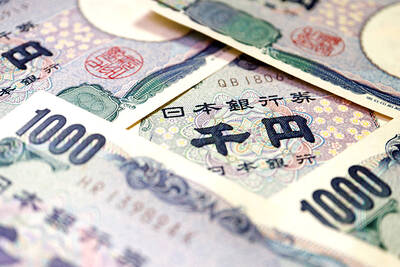E-paper display supplier E Ink Holdings Inc (元太科技) yesterday gave a positive outlook for the second half of the year as its customers prepare to launch new e-reader and e-notebook models that should fuel growth.
After exiting the lower-margin LCD industry last quarter, the company said it is now concentrating on expanding uses for e-paper displays to diverse applications such as e-notebooks, smart cards and multicolored electronic shelf labels for retailers and logistics operators.
“We see year-on-year growth in the e-reader business in the second half during the peak season, primarily driven by rising demand from China and emerging markets,” Frank Ko (柯富仁) told an teleconference in Taipei.
E Ink is a long-time e-paper display supplier for e-readers sold by Amazon.com Inc and Rakuten Kobo Inc.
There are growth opportunities in the company’s new product lines, such as e-notebooks, Ko said.
“We have been actively developing e-notebooks over the past one to two years together with our key customer,” Ko said
E-ink has teamed up with Sony Corp in a joint venture to develop a laptop product integrating its technology.
“This year is an important year for us to pitch this product to the market,” Ko said. “We are seeing replacement demand from the healthcare sector to the financing and education sectors,” Ko said.
This year as a whole, e-readers and e-notebooks are expected to contribute more than 70 percent to E Ink’s overall revenue, he said.
E Ink has also made progress in promoting its e-paper displays for ‘smart’ credit cards, point-collection cards and public transportation cards, Ko said.
France’s major banks and Korea Telecom Corp are to equip their credit cards or debit cards with e-paper displays to enhance security, he said.
While those new applications may take some time to make significant revenue contribution, Ko said the company is expecting growth in its major electronic shelf labels in the second half of the year.
Chinese retailers, such as a new supermarket funded by Alibaba Group Holding Inc (阿里巴巴), are joining their peers in the US and Europe in adopting electronics shelf labels, Ko said.
Electronic shelf labels would make up between 15 percent and 20 percent of E Ink’s revenue this year, making them the firm’s second-biggest source of revenue, he said.
Given the rising contribution from higher-margin products, Ko said “gross margin in the second half will remain above average for the company.”
Last quarter, gross margin climbed to 40.1 percent, the best result since 2002, company data showed.
E Ink’s operating income last quarter soared 71 percent to NT$293 million (US$14.5 million), from NT$171 million in the same period last year.
Royalty income, an important contributor to the company’s bottom line, is expected to remain stable this year, Ko said.
E Ink last year booked NT$2.25 billion in royalty income. It made NT$870 million from royalties in the second quarter of this year.

AI TALENT: No financial details were released about the deal, in which top Groq executives, including its CEO, would join Nvidia to help advance the technology Nvidia Corp has agreed to a licensing deal with artificial intelligence (AI) start-up Groq, furthering its investments in companies connected to the AI boom and gaining the right to add a new type of technology to its products. The world’s largest publicly traded company has paid for the right to use Groq’s technology and is to integrate its chip design into future products. Some of the start-up’s executives are leaving to join Nvidia to help with that effort, the companies said. Groq would continue as an independent company with a new chief executive, it said on Wednesday in a post on its Web

GROWING OWINGS: While Luxembourg and China swapped the top three spots, the US continued to be the largest exposure for Taiwan for the 41st consecutive quarter The US remained the largest debtor nation to Taiwan’s banking sector for the 41st consecutive quarter at the end of September, after local banks’ exposure to the US market rose more than 2 percent from three months earlier, the central bank said. Exposure to the US increased to US$198.896 billion, up US$4.026 billion, or 2.07 percent, from US$194.87 billion in the previous quarter, data released by the central bank showed on Friday. Of the increase, about US$1.4 billion came from banks’ investments in securitized products and interbank loans in the US, while another US$2.6 billion stemmed from trust assets, including mutual funds,

RESPONSE: The Japanese Ministry of Finance might have to intervene in the currency markets should the yen keep weakening toward the 160 level against the US dollar Japan’s chief currency official yesterday sent a warning on recent foreign exchange moves, after the yen weakened against the US dollar following Friday last week’s Bank of Japan (BOJ) decision. “We’re seeing one-directional, sudden moves especially after last week’s monetary policy meeting, so I’m deeply concerned,” Japanese Vice Finance Minister for International Affairs Atsushi Mimura told reporters. “We’d like to take appropriate responses against excessive moves.” The central bank on Friday raised its benchmark interest rate to the highest in 30 years, but Bank of Japan Governor Kazuo Ueda chose to keep his options open rather than bolster the yen,

Even as the US is embarked on a bitter rivalry with China over the deployment of artificial intelligence (AI), Chinese technology is quietly making inroads into the US market. Despite considerable geopolitical tensions, Chinese open-source AI models are winning over a growing number of programmers and companies in the US. These are different from the closed generative AI models that have become household names — ChatGPT-maker OpenAI or Google’s Gemini — whose inner workings are fiercely protected. In contrast, “open” models offered by many Chinese rivals, from Alibaba (阿里巴巴) to DeepSeek (深度求索), allow programmers to customize parts of the software to suit their